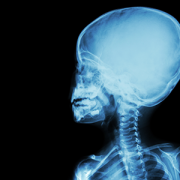Experts reach consensus in study using modified Delphi technique

The understanding of many aspects of care for children with cervical spine injuries is limited due to the low number of these injuries and the limited experts in the field.
A new study, published in the Journal of Neurosurgery: Pediatrics, brought together an international, multidisciplinary group of pediatric cervical spine experts to generate 45 consensus statements regarding the management of pediatric cervical spine disorders and stabilization using a modified Delphi technique.
What this means
Cervical spine injuries are rare in the pediatric population. The understanding of many aspects of care for children with cervical spine injuries is limited due to the low number of these injuries and the limited experts in the field. Despite this, cervical spine injuries can have devastating outcomes if improperly treated. Consensus around optimal treatment of these injuries from experts is necessary.
“Giving evidence and practical treatment guidelines to these injuries for less experienced centers to follow is important,” says Matthew Oetgen, M.D., chief of the Division of Orthopaedic Surgery and Sports Medicine at Children’s National Hospital and one of the study’s authors. “The goal is to better elucidate the treatment of these injuries to improve care internationally.”
How will this work benefit patients?
Improved guidelines and recommendations for the treatment of patients with cervical spine injuries will lead to more optimal outcomes and decreased complications for pediatric patients with these rare but potentially devastating injuries.
What did you find that excites you?
“We were able to practically define what constitutes abnormalities in pediatric cervical spines — what constitutes injuries and what does not — to improve the assessment of children,” says Dr. Oetgen. “We have improved the understanding of optimal preoperative, intraoperative, postoperative and nonoperative care for these patients to improve outcomes for these injuries.”
How is Children’s National leading in this space?
Although rare, pediatric cervical spine injuries are serious. Limited centers, like Children’s National, have expertise in this area of surgery. This study is the initial legwork towards improving the treatment options of these injuries internationally. Children’s National, along with other institutions, will continue to develop approaches for the management of pediatric cervical spine disorders and stabilization.
You can read the full study, Developing consensus for the management of pediatric cervical spine disorders and stabilization: a modified Delphi study, in the Journal of Neurosurgery: Pediatrics.











